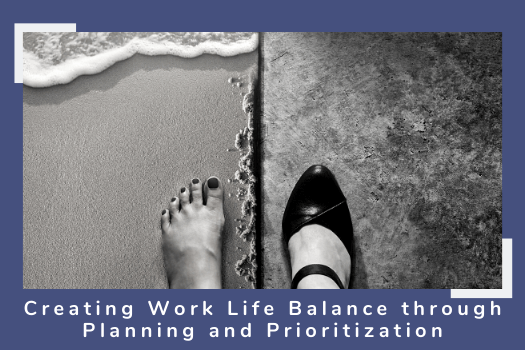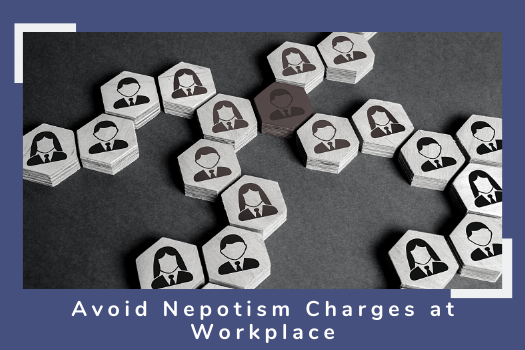Creating Work Life Balance through Planning and Prioritization
Employee Engagement, Employee Relations, Rewards and Recognition
Prime Minister Narasimha Rao, along with his finance minister Manmohan Singh, initiated the economic liberalization in 1991. The reforms did away with the Licence Raj, reduced tariffs and interest rates and ended many public monopolies, allowing automatic approval of foreign direct investment in many sectors, such as telecommunication, computer software and hardware, BFSI, IT enabled services, Construction, to name a few. While economic liberalization created several new career possibilities for the youth in India, organizations and employees were unaware of subtle challenges of economic liberalization. In late 1990’s, business leaders and HR professionals in India were introduced to a new expression, “work-life balance”. The expression “work-life balance” was first used in the United Kingdom in late 1970’s to describe the balance between an individual’s work and personal life. In the United States, this phrase was first used in 1986. In India, Software Development, IT Enabled, and new age industries were first to use this phrase in late 1990’s, when they began to witness enormously high attrition rate, stress level, depression, and other mental disorders among employees.
The leadership team of the organization, I was working with at that point in time in 2002, was preparing to venture into another industry, Business Process Outsourcing classified into FOUR verticals - Analytics, Insurance, HR and F&A. During a pre-launch phase, we were conducting interviews to hire 500 employees in the first batch of the project. I was leading the project. We didn’t have much idea about how BPO industry works, hence, most of our learning was through reading resumes of candidates. One day my reporting manager called me and asked, “Sanjeev, what is work-life balance”? Probably, I gave him a confused look. “Today, during an interview with Vice President for Analytics, he mentioned that it is important to encourage work-life balance as it helps in retaining employees.
In order to understand work-life balance, we need to understand the meaning of life, the purpose of work, impact of imbalance between work and life, and methods to maintain balance in the era of technology and social media. Life is a journey to a mysterious destination. Relationship and communication are two mechanisms given to us to ensure a meaningful and purposeful journey. In order to stay on the course of our journey, it is essential for us to have a dynamic body, healthy mind and spiritually aligned soul. We need to feed our body from time to time, rejuvenate it before it collapses, and protect it in all weathers through day and night. We are also given a very soft, vital and magical gift which we need to protect and strengthen throughout our journey - our emotions. It’s in our capability to make the best use of our relationship development and communication abilities to run life smoothly. To feed our body and to provide protection to it across seasons, we need to work. Any activity that translates into money or an equivalent, required to provide food and shelter to our body, is called WORK.
Tools to create work-life balance
Here are few tips that will help an employee in achieving this coveted balance -
Planning – The corporate world is said to be going through VUCA storm; volatile, uncertain, complex and ambiguous. Planning is one of the primary tools one can use in creating work-life balance. It is said that one minute spent in planning saves ten minutes in execution. Best known countries that provide excellent work-life balance to their employees, such as Sweden, New Zealand, Denmark, etc. are known for using planning efficiently. Plan your day at work. Plan your day at home and stick to the plan. If you are not planning, you are wasting your resources and life.
Time Management/Prioritization – Set clear prioritization. 80/20 rule works everywhere which are 20% of your effort will accomplish 80% of your work. However, most of the time many people ignore this rule and spend a major part of the day in doing things which are unimportant or not at all to be done by them. List down all activities to be done by you and then filter them in FIVE buckets – A, B, C, D and E.
Bucket “A” - very important; serious consequences if not done
Bucket “B” – important; minor consequences if not done
Bucket “C” – Good to do. No negative consequences.
Bucket “D” – Delegate
Bucket “E” – Eliminate
Focus on activities that are ESSENTIAL instead of those that are EASY.
Learn to say “NO” – Our inability to say, “NO” to our customers, our clients, our reporting managers, our loved ones causes an imbalance in our work-life balance. We are too scared to say “no” and as a result, we invite stress leading to unhealthy and remorseful mind. Say “no” to anything which is not in your domain. Stop trying to do all things for all people.
Effective and efficient use of technology – With technology at our disposal we don’t really need to travel for routine and mundane meetings and work. Conference calls, video or audio, can be attended from any part of the world. Project/Work progress can be tracked from anywhere. For example, I don’t see any need for a recruiter to go to the office unless he needs to meet a client. Screening, sourcing, shortlisting of profiles, scheduling of interviews and follow-up with clients and candidates can be done from home. In case you have no other option but to travel then make the best use of your time by listening to audio books and learn. If you are not driving, then use your traveling time for social media updates, online shopping, etc.
Let go of perfectionism – Perfectionism is a myth; Continuous Improvement is a reality. Many employees spend too much of time in perfecting activities that are acceptable to be just Okay. I am sure we all have seen employees decorating their excel sheets and word documents with unnecessary graphs, colours, etc. Chronic procrastination is a surprising consequence of perfectionism. Putting tasks off is the perfectionist’s way of protecting him- or herself from the underlying fear that the task will not be completed perfectly. As long as you are following the process and set guidelines, it is perfectly OKAY to be imperfect.
Employees who are positive about their workplace help to foster a positive attitude. They are more likely to be committed, flexible and responsive to business and customers’ needs. Embracing the importance of work-life balance is not only good for employees; it’s good for the future of an organization. Therefore, employers do have a role to play. Don’t be rigid. Design jobs carefully to maximize their flexibility, hire the best employees you can, empower them with the best tools, and trust them to make the best use of their time for your company – at work and at home.
Finally, it’s your life and therefore you have SOLE responsibility of creating work-life balance. Use your gift of relationship building and communication, effectively to create that balance.
Are you struggling with work-life balance? Share your experience and stories, I can help you.
Composed By – Sanjeev Himachali






